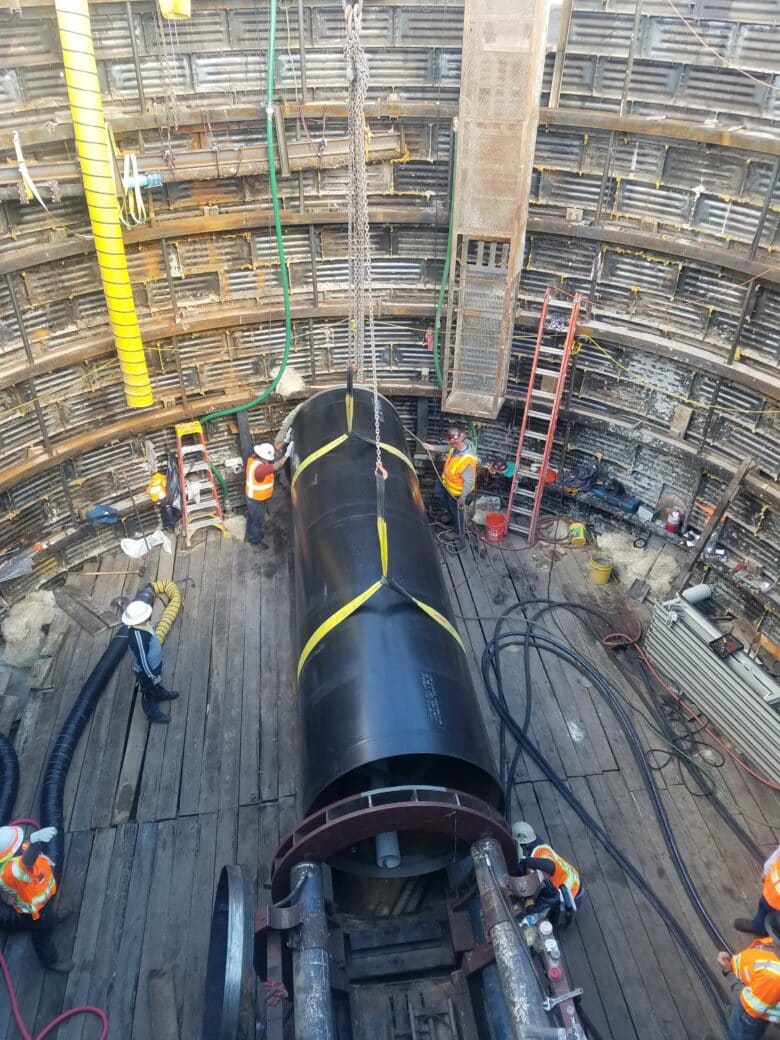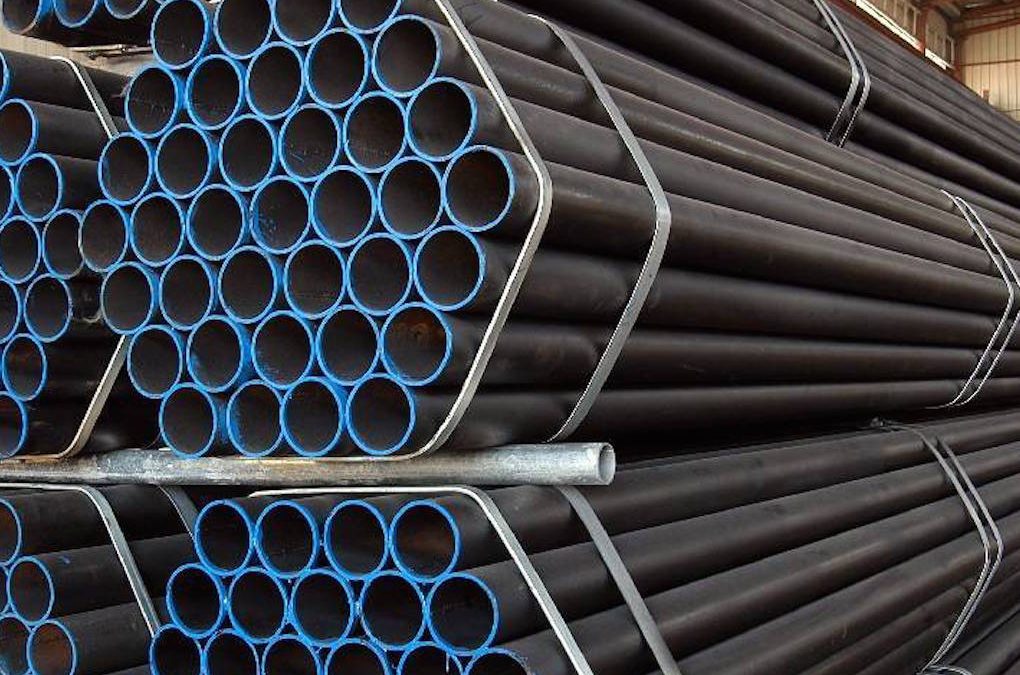A Casing Is A Steel Pipe
AWWA ASTM A1097 and AWWA C200
Casing is a series of steel pipes that are run into a drilled oil well to stabilize the well, keep contaminants and water out of the oil stream, and prevent oil from leaching into the groundwater. Casing is installed in layers, in sections of decreasing diameter that are joined together to form casing strings. Steel Casing pipe grades are identified by letters and numbers which indicate various characteristics of the Casing pipe steel ( as example P110). It is a specification according to its yield stress, ultimate tensile strength, chemical composition, heat treatment or other characteristics. There are many grades of casing steel pipes that make up. A casing pipe is a hollow steel tube that is typically rammed into place through the earth by using a hydraulic or pneumatic jack. After being driven, the displaced soil is removed and the product pipe, or carrier pipe, is inserted inside the steel tube. Casing pipe may also be simply referred to as casing or encasement pipe.
Northwest Pipe Company manufactures Permalok® Casing Pipe to the specifications of your project and to the consensus standards set by ASTM or AWWA. We are a fully experienced, reputable, and qualified manufacture of steel pipe, casings and fittings. All pipe and fittings are designed and constructed in accordance with the best practices and comply with applicable specifications. Our pipe cylinders, coating, lining, and fabrication of specials are manufactured in ISO 9001:2000 certified facilities.
Standards

Standard
AWWA C200 and AWWA Steel Pipe Design Manual M11
Construct
Spiralweld and seam-weld steel pipe
Size
Standard diameters of 12” to 150” in lengths of 3’ to 50’. Wall thickness 0.105” through 2.500”.
Capacity
Permalok is most often used as a casing pipe. Permalok with a T-7 joint can be used as a carrier pipe in low- to medium-pressure applications.
Joints
Permalok T-5, Permalok T-7, Permalok Auger Bore AB Joint and Pipe Ramming.

Linings
Polyurethane, liquid epoxy, and specialty paints.
Coatings
Polyurethane, liquid epoxy, and specialty paints.
Principle Uses
Casing pipe excels in trenchless applications including microtunneling, jacking, and auger boring. Often used under road and rail structures as well as under bodies of water to insulate carrier pipe. Also used as carrier pipe in low- to medium-pressure applications.
Ask an Engineer!
Have a technical question on Permalok?
Steel casing is type of pipe that typically runs underground. It can be used to protect items inside the pipe or to provide an extra barrier between the matter in the pipe and the earth. Another name for these products is encasement pipes.
The pipes are usually placed in the ground in separate segments and then welded together. In some cases, pipe can be threaded through a pre-existing hole or tunnel. The latter method is usually necessary because the hole was drilled, rather than dug from ground level, due to an obstruction such as a road or a river.
Steel casing pipe comes in a wide array of sizes and grades. It is categorized by both the diameter of the pipe interior and the thickness of the pipe walls. Many grade descriptions begin with the prefix ASTM, which stands for the American Society for Testing Materials. The ASTM is an international organization that sets standards for a wide array of building materials, including pipes. There are some locations where an ASTM grade is a legal requirement for construction materials.
The most commonly used type of steel casing pipe is ASTM A-252. It is desirable for many builders because it tends to be a cost effective grade of pipe that does not require as strict adherence to inspection requirements as many other grades of pipe. For example, ASTM A-252 does not need hydrostatic testing, which is a method used to find the source of leaks.
A steel casing pipe will often be used to provide protection for or serve as an extra barrier around liquid that is being transported. It can help to prevent the contamination of water from outside elements. The pipe can also keep fuels such as oil and gas from leaking into the soil.
Steel Pipe Casing Size Chart
Protection of a wide array of underground lines and cables is another use for steel casing pipe. They can encase utility lines or help to protect electrical or fiber optic cables. Often, several different types of cables or lines will be put in the same network of pipes.
A Casing Is A Steel Pipe Thickness
When multiple lines share a steel casing pipe, they are usually attached to the side of the pipe with casing spacers. This helps keep the lines separate. The spacers are usually made of steel or plastic, and each end of the pipe is usually protected with seals made of pliable material, such as rubber.